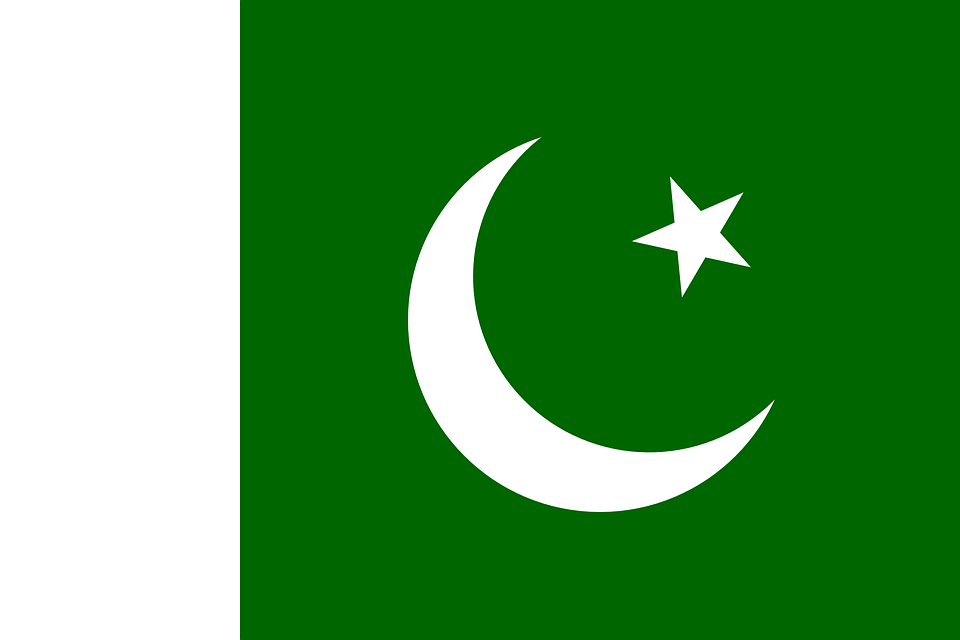Pakistan is a country located in South-East Asia. The country is an agri-based economy moving towards the service sector and ranked as a developing country in the world. One of the most important industries of Pakistan is the cotton textile industry where Pakistan ranks as the 5th largest global cotton producer in the world. Due to the high volume of cotton availability, the garment industry of Pakistan finds it easier to procure raw materials at a cheaper price. As a result, Pakistan has become one of the leading garment manufacturers and exporters in the world.
Overview of Garment Industry in Pakistan
The garment industry of Pakistan made revenue of $6.01 billion in 2022. Unlike other garment markets which have a positive growth rate for the future, the garment industry of Pakistan has a negative CAGR of -1.99% forecasted for 2022 – 2026 [1]. At one point, Pakistan had a highly successful garment market but due to various economic instabilities, power crisis, and political instabilities, many industries including the garment industry of the country have been affected negatively.
The largest subsector of the garment industry in Pakistan is the women’s apparel market which accounts for about 41.67% of the total sales of the market amounting to $2.51 billion [1]. A consistently worsening economic position, unemployment, and falling currency rate have dropped down the average revenue per person to only $26.19 in 2022 [1]. On the other hand, the average volume per person in the garments industry of Pakistan is 7.8 pieces [1]. Statistics also show that by 2022, 99.95% of the sales in the apparel market are going to be from non-luxury clothing items while 0.05% of the sales are going to be from luxury clothing items [1].
Despite the various negative statistical aspects of the garment industry of Pakistan, it is one of the biggest garment producers in the world. The USA, European Union, and many other countries have been importing garments from Pakistan for several years.
Garment Industry of Pakistan | Detailed Analysis
The garment industry of Pakistan is highly dependent on cotton production. Pakistan does not import cotton from other countries on a large scale to support the industry. While this helps in keeping the costs low, other things can hinder progress as discussed in the challenges of Pakistan’s garment industry below.
Few of the largest garment producers in Pakistan include Gul Ahmed Textiles Ltd, Husein Industries Limited, Kohinoor Mills Limited, Nishat Mills Limited, Fazal Cloth Mills Limited, and Safa Textile Mills Limited. According to the information provided by the Board of Government in Pakistan, 423 textile companies are working in Pakistan of which 5% are also listed on the Pakistan Stock Exchange [3]. The garment industry of Pakistan is so big that it accounts for 40% of the total labor force of the country [3]. Out of the entire workforce employed in the manufacturing sector, the textile and garments manufacturing sector accounts for 46% [3].
Apart from cotton, Pakistan also has ample availability of resources such as jute, rayon, silk, and various other fibers as well [3]. Pakistan has large and fertile plain lands on the Indus delta and in the region Punjab where different types of plant fibers are grown.
Pakistan’s ready-made garment industry mainly produces denim jeans, t-shirts, shalwar kameez (traditional dress), formal shirts, formal pants, polo shirts, tank tops, jerseys, jackets, and many other clothing items as well. Denim jeans and fabric are one of the most exported items from Pakistan along with cotton shirts.
Digital Marketspace Statistics of Apparel in Pakistan
As far as the online market for apparel is concerned, Pakistan made revenue of $597.5 million in 2022 [2]. This figure is included in the above-mentioned total revenue generated from the apparel market. Despite the net growth going negative, the revenue from e-commerce garment sales in Pakistan is forecasted to increase at a slow rate of 2.57% per annum between 2022 and 2025 [2]. In addition to that, the user penetration rate is 8% for 2022 and is forecasted to reach 10.3% by 2025 [2]. Lastly, the average revenue per user from the online sales of garments is forecasted to reach $32.71 [2].
These statistics indicate that there is an increasing trend of online shopping in Pakistan and people are buying from brands as well as non-branded garments over the internet. Many brands in Pakistan have said that around 19-30% of their total sales are coming from the online markets and this percentage is forecasted to increase further with an increase in the trend for online shopping [4].
In terms of garment brands in Pakistan, Limelight had the highest e-commerce sales in 2021 valuing up to $50 million followed by Gul Ahmed at $48 million [4]. Khaadi is also a cultural clothing brand that had online sales of $29 million [4]. Sana Safinaz and Al-Karam Studio had close competition in sales with $23 million and $22 million in sales, respectively [4].
Women’s Garment Market in Pakistan
Women in Pakistan have a high demand for shopping and buying new clothes. This is one reason why the women’s garment market in Pakistan is the largest sub-segment of the industry valued at $2.51 billion [5] [1]. However, negative growth is forecasted between 2022 and 2026 at -1.88% [5]. The main reason for this is the unexpectedly high inflation, depreciating currency value, and fall in the purchasing power of the customers.
Despite the high demand by women for clothing, per person revenues are only $10.92 for 2022 [5]. This implies that many women in Pakistan do not have access to proper clothing and other basic facilities. It is only the upper middle economic class that has got the average revenue to $10.9 otherwise it would have been even lower [5]. The News International reported that the rate of poverty in Pakistan has been increasing massively. In 2020-21, the rate of poverty was 39.3% and came down to 37.9% by 2022-23 [6]. However, this is still a large percentage and shows that many women aren’t even spending on clothing at all.
This is further validated by the fact that the average volume per person in the women’s apparel market of Pakistan has been 3.1 pieces in 2022 [5]. It can be inferred from this that despite the upper-middle and upper-class spending actively on garments, a large proportion of the country is not doing so and is instead, falling to the line of poverty.
Men’s Garment Market in Pakistan
One of the worst performing garment sub-sectors of Pakistan is the men’s garment market which made $1.9 billion in 2022 and is forecasted at a negative growth of -1.73% between 2022 and 2026 [7]. Additionally, what makes it one of the worst performing sectors is that the average volume per person sales is too low and close to a breakeven point at about 1.1 pieces per person in 2022 [7].
This implies the fact that a large majority of men in Pakistan don’t spend on clothing at all and don’t have sufficient income streams to focus on such a basic necessity of life. It also shows that 1 piece per person is being sold and indicates that there might be a time when the average volume per person will be 0.9 or 0.8 per person indicating that there is more production of men’s clothes than their demand [7]. This is quite an astonishing aspect for the garment industry of Pakistan and it needs to focus on recovering from the current break-even situation.
Additionally, the per person revenues are also at $8.42 [7]. All these aspects indicate the lower purchasing power leading to lower spending on garments as well as other products.
Children’s Garment Market in Pakistan
The children’s garment market in Pakistan also hasn’t performed much and just like other segments, it is also forecasted for negative growth. As of 2022, the revenue in the children’s garment market of Pakistan amounted to $1.5 billion while the growth rate is forecasted at -2.49% CAGR between 2022 and 2026 [8]. While the revenue being low is not much of a problem, it is the negative growth rate that gives an idea of numerous challenges in Pakistan’s garment industry.
It shows that parents will be spending less on their children’s garments and will prefer to repeat the existing clothes which will give a loss to this segment. Per person revenues in the children’s apparel market of Pakistan were just $6.86 in 2022 which is astonishingly low [8]. The fact that less than $7 is spent on a child’s clothing per year indicates that the major effects of poverty, inflation, unemployment, and various other problems faced by Pakistan are trickling down on the market for children’s garments as well [8].
In addition to that, the average volume per person in the children’s apparel market is 3.6 pieces [8]. This is the highest out of the entire garment market. Both men and women have 1.1 pieces and 3.6 pieces as average volume per person [6] [7] [8]. It indicates that parents are often compromising on their own clothing needs to fulfill the clothing of their children.
Exports of Garment Industry of Pakistan
While the domestic market for garments is in a negative position for Pakistan, the export industry for garments in Pakistan has been booming. Statistics shows that the value of textile and garment exports from Pakistan have increased by 25.43% during the first nine months of FY 21-22 [9]. Pakistan was able to earn a massive $14 billion from textile and ready-made garment exports in FY 21-22 as compared to $11.35 billion in FY20-21, as reported by Fiber Fashion and Pakistan’s Bureau of Statistics [9]. This implies the fact that there is a high international demand for cloth manufactured in Pakistan.
Further reports show that knitwear exports had a rise of 34.12% while non-knit but ready-made garments were up by 26.24% [9]. Cotton yarn and synthetic fibers are also among the key exports of the garment industry of Pakistan in the raw material segment which increased by 25.97% in FY 21-22 as compared to FY20-21 [9]. There are bright perspectives for exports of Pakistan’s garment and textile industry in the future as well.
Opportunities in the Garment Industry of Pakistan
As the garment industry of Pakistan struggles, there are few opportunities for the country to explore.
Primarily, Pakistan can rely on its close ally, China, for the promotion of Pakistan’s textile and garment sector. Pakistan can increase exports to China as well as work in close collaboration for further development as well. Currently, Pakistan and China are already investing in a major project by the name of China Pakistan Economic Corridor (CPEC) which will provide China a major sea route access to the rest of the world as Pakistan has a sea border while China is a landlocked country [16]. The garment industry of China is one of the best-performing ones in the world. Strategic help from China can open up many doors for the garment industry of Pakistan. The Pakistan Business Council suggests that Pakistan needs to renegotiate better terms in the Pak-China FTA for better support to the industry [10].
Another important opportunity is to begin exporting to countries where there is low competition. South African economies are not having much competition as many brands do not operate there. However, the first-mover advantage can prove quite useful in the long run to Pakistan.
Challenges in the Garment Industry of Pakistan
There are three main challenges for the garment industry of Pakistan. Overcoming these challenges opens up a huge potential for the country to go for billion-dollar opportunities due to geographic location access.
The primary problem in the garment industry of Pakistan is the lack of systematic management and an efficient policy framework to regulate the industry. Reports have suggested that Pakistan has one of the highest cases of corruption and nepotism in numerous departments [15]. Bribery, ransom, and many other problems are faced by the garment manufacturers of Pakistan with limited support from the Government. For example, a particular official might not give a Non-Objection Certificate to a particular garment manufacturer unless they pay a heavy amount. Likewise, tenders are generally provided to those companies which are paying higher commissions to the authorities.
As a result of this, there is a high level of discouragement in the country’s garment sector where new producers don’t enter and the old ones try to leave. There are limited merit-based competition opportunities offered to the manufacturers of garments in Pakistan. New entrants are not welcomed or supported by the Government on a large scale due to mass corrupt practices in the system of Pakistan [15]. The outcome of this is that the garment industry often struggles to meet the demand, targets, quality control standards, and various other aspects as well [15].
Another important issue in the garment industry of Pakistan is labor rights abuse. This is such a big problem that many big brands have stopped sourcing from Pakistan because of facing pressure from their stakeholders. There is a massive violation of fundamental human rights and labor rights in the garment sector [11]. A member of the Pakistan Trade Union Federation reports that industrialists often treat laborers and workers worse than animals [14]. Additionally, Human Rights Watch also reports several malpractices in the garment industry [11] [14]. Based on data from 118 garment workers from 25 factories, it has been found out that
- Workers are not even paid their minimum wages in many cases.
- Salaries are deducted even if there is an absence for one day.
- There is no access to a trade union for the workers.
- Workers are often forced to work overtime and are not paid sufficiently in this regard.
- There are limited to no breaks in a daily routine.
- No paid maternity leaves are given. Any woman visibly pregnant is simply forced to leave the job.
- The working conditions are a mess. There is a lack of electricity, basic food, and water access, and there are unsanitary working conditions.
- There is no proof of employment or contract signed by the employees.
One outcome of these few problems is that there is low productivity, lack of efficiency, and an increased turnover rate [11]. As suggested earlier, there is no systematic management in the industry. There are various other issues as well regarding the case of employees in the garment industry which is why Pakistan is struggling in the garment sector.
Lastly, an important issue in the case of the garment industry of Pakistan is the rising inflation in the country. The country experienced one of the worst inflations of all time in 2022 [12]. By June 2022, the rate of inflation was 21.3% which was a 13-year high record, as reported by Pakistan’s Beaurue of Statistics [12]. Statistics show that this inflation could go up to 35% or even more. One of the outcomes this has on the garment industry of Pakistan is that it has made the raw materials expensive [12]. Even manufacturing has become expensive as the National Electric Power Regulating Authority of Pakistan (NEPRA) has made electricity almost 50% expensive by about 11 rupees per unit [13].
As a result of all these drastic measures, the garment industry of Pakistan will struggle to find more exporting partners who would instead, prefer cheaper clothing from the garment industry of China, the neighboring country and close ally of Pakistan. It is among the leading garment manufacturers in the world. There are high chances that due to such problems, the garment industry of India as well as many other countries close to Pakistan might take over the position of the country.
Conclusion
The garment industry of Pakistan may be facing several challenges currently but with some effort, the garment industry can become better in the near future easily. It is important to realize that the economic condition of Pakistan is playing a crucial role in the development of the garment industry. If the economic condition improves, the domestic market will automatically improve.
References
- Statista. 2022. Apparel – Pakistan | Statista Market Forecast. [online] Available at: <https://www.statista.com/outlook/cmo/apparel/Pakistan> [Accessed 18 July 2022].
- Statista, 2022. Apparel – Pakistan: Statista market forecast. Statista. Available at: https://www.statista.com/outlook/dmo/ecommerce/fashion/apparel/Pakistan [Accessed August 13, 2022].
- Invest Pakistan, 2021. Textile in Pakistan. Textile | Board Of Investment. Available at: https://invest.gov.pk/textile [Accessed August 15, 2022].
- E-Commerce DB, 2022. ECommerce market Pakistan – data, trends, top stores. E-Commerce DB. Available at: https://ecommercedb.com/en/markets/pk/all [Accessed August 15, 2022].
- Statista. 2022. Women’s Apparel – Pakistan | Statista Market Forecast. [online] Available at: <https://www.statista.com/outlook/cmo/apparel/women-s-apparel/Pakistan> [Accessed 31 July 2022].
- Business Standard, 2021. Poverty in Pakistan rises to over 5% in 2020, Estimates World Bank. Business Standard. Available at: https://www.business-standard.com/article/international/poverty-in-pakistan-rises-to-over-5-in-2020-estimates-world-bank-121062200084_1.html [Accessed August 16, 2022].
- Statista. 2022. Men’s Apparel – Pakistan | Statista Market Forecast. [online] Available at: <https://www.statista.com/outlook/cmo/apparel/men-s-apparel/pakistan> [Accessed 31 July 2022].
- Statista. 2022. Children’s Apparel – Pakistan | Statista Market Forecast. [online] Available at: <https://www.statista.com/outlook/cmo/apparel/children-s-apparel/Pakistan> [Accessed 9 August 2022].
- Fibre2fashion.com. 2022. Pakistan’s textile & apparel exports rise 25.43% in July-March FY22. [online] Available at: <https://www.fibre2fashion.com/news/textile-news/pakistan-s-textile-apparel-exports-rise-25-43-in-july-march-fy22-280502-newsdetails.htm> [Accessed 18 July 2022].
- Pakistan Business Council. 2022. Pakistan’s Readymade Garments Sector: Challenges and Opportunities | Pakistan Business Council. [online] Available at: <https://www.pbc.org.pk/research/pakistans-readymade-garments-sector-challenges-and-opportunities/> [Accessed 18 July 2022].
- Human Rights Watch, 2020. No room to Bargain. Human Rights Watch. Available at: https://www.hrw.org/report/2019/01/24/no-room-bargain/unfair-and-abusive-labor-practices-pakistan [Accessed August 16, 2022].
- Republic World, 2022. Pakistan: Inflation rises to a 13-year high of 21.3% in June, expected to rise further. Republic World. Available at: https://www.republicworld.com/world-news/pakistan-news/pakistan-inflation-rises-to-13-year-high-of-21-dot-3-percent-in-june-expected-to-rise-further-articleshow.html [Accessed August 16, 2022].
- Sherani, T., 2022. NEPRA raises power tariff for Karachi consumers by RS11.10 for June on account of fuel cost adjustment. DAWN.COM. Available at: https://www.dawn.com/news/1704317 [Accessed August 16, 2022].
- Dawn News, 2019. Millions working in Pakistan’s garment industry suffer abuse and labor rights violations: Report. DAWN.COM. Available at: https://www.dawn.com/news/1459119 [Accessed August 16, 2022].
- Pakistan Business Council, 2021. Pakistan’s Readymade Garments Sector: Challenges and Opportunities. Pakistan Business Council. Available at: https://www.pbc.org.pk/wp-content/uploads/Pakistan%E2%80%99s-Readymade-Garments-Sector-Challenges-and-Opportunities.pdf [Accessed August 16, 2022].
- CPEC, China Pakistan Economic Corridor. Cpec.gov.pk. Available at: http://cpec.gov.pk/introduction/1 [Accessed August 16, 2022].





